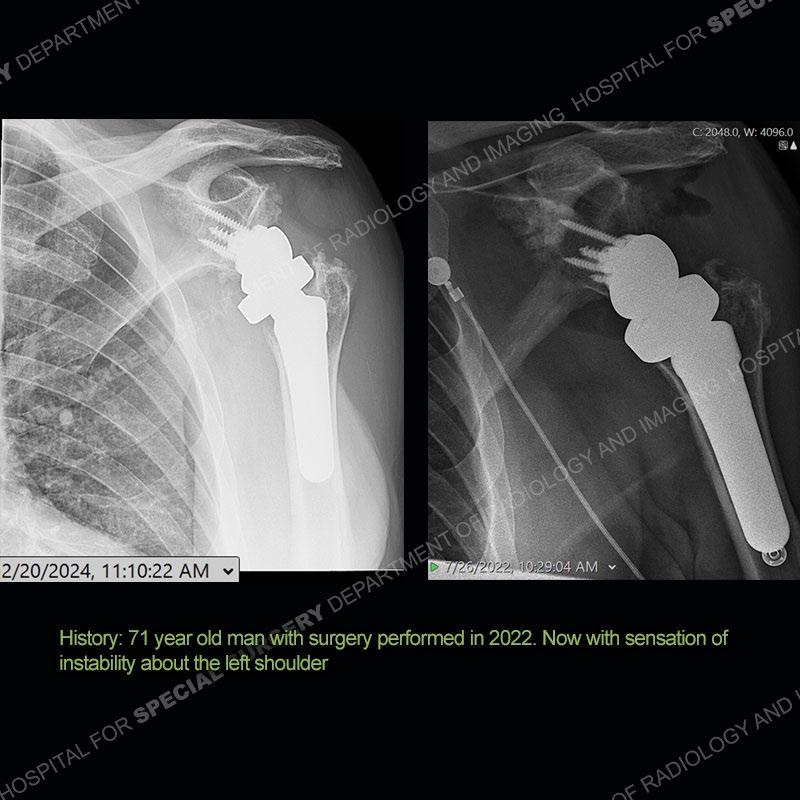
What’s the Diagnosis – Case 191 1
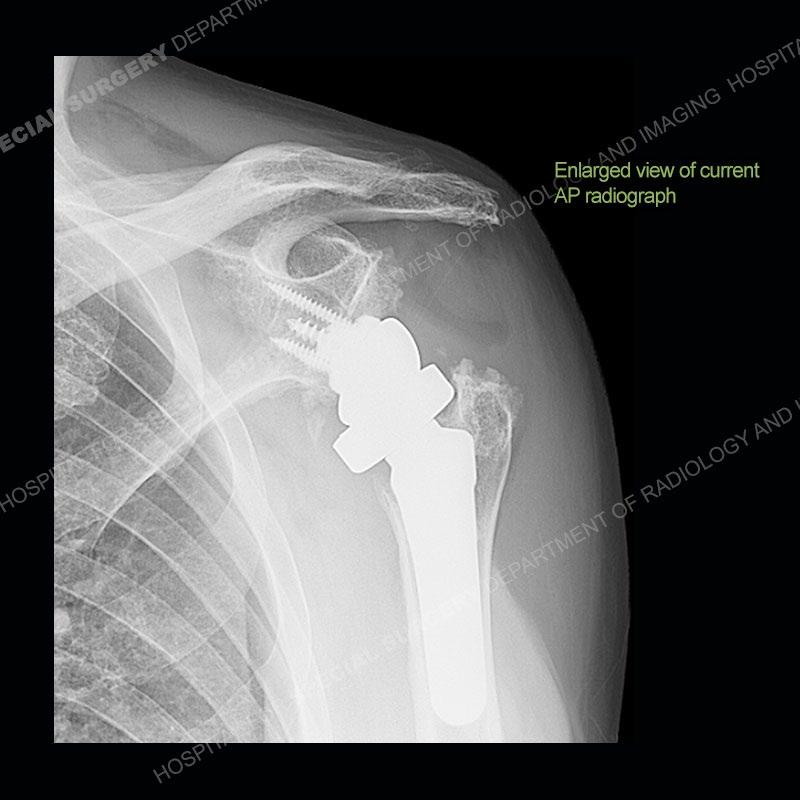
What’s the Diagnosis – Case 191 2

What’s the Diagnosis – Case 191 3

What’s the Diagnosis – Case 191 4

What’s the Diagnosis – Case 191 5
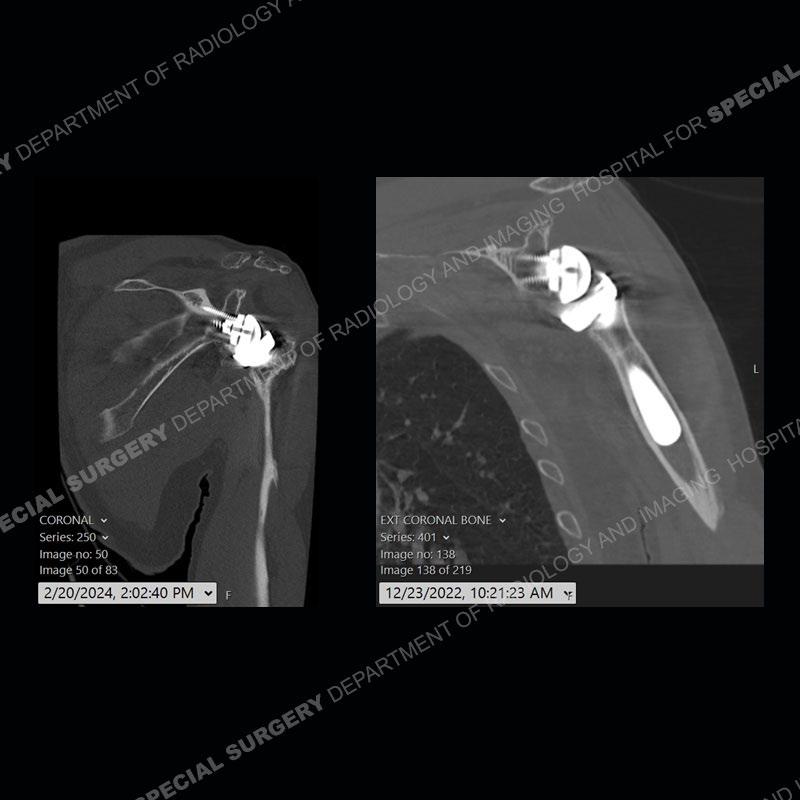
What’s the Diagnosis – Case 191 6

What’s the Diagnosis – Case 191 7

What’s the Diagnosis – Case 191 8

What’s the Diagnosis – Case 191 9

What’s the Diagnosis – Case 191 10

What’s the Diagnosis – Case 191 11
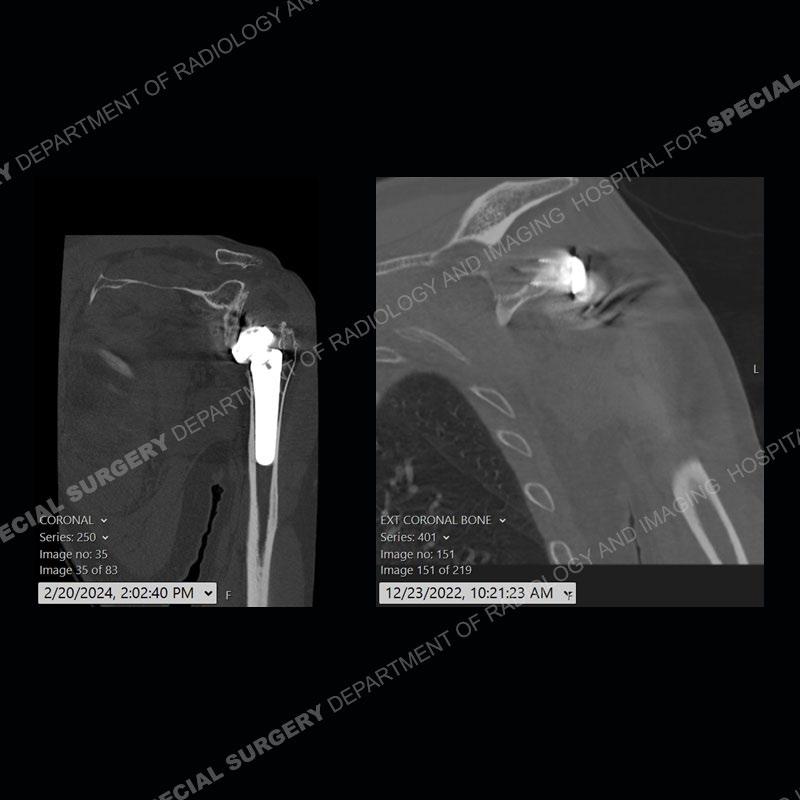
What’s the Diagnosis – Case 191 12
Findings
When comparing the radiographs, there is a slight change in the alignment in the components of the prosthesis. On the current radiographs, a radiolucent, crescentic focus is present at the level of the glenoid. When comparing the CT exams, there is a change at the alignment of the glenosphere and the humeral component and now a direct apposition of the components. On the current CT, the radiolucent, crescentic focus is again identified.
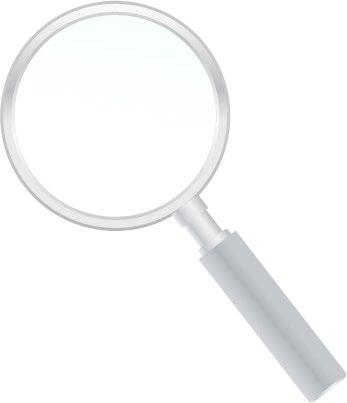
What’s the Diagnosis – Case 191
13

What’s the Diagnosis – Case 191 14

What’s the Diagnosis – Case 191 15

What’s the Diagnosis – Case 191 16
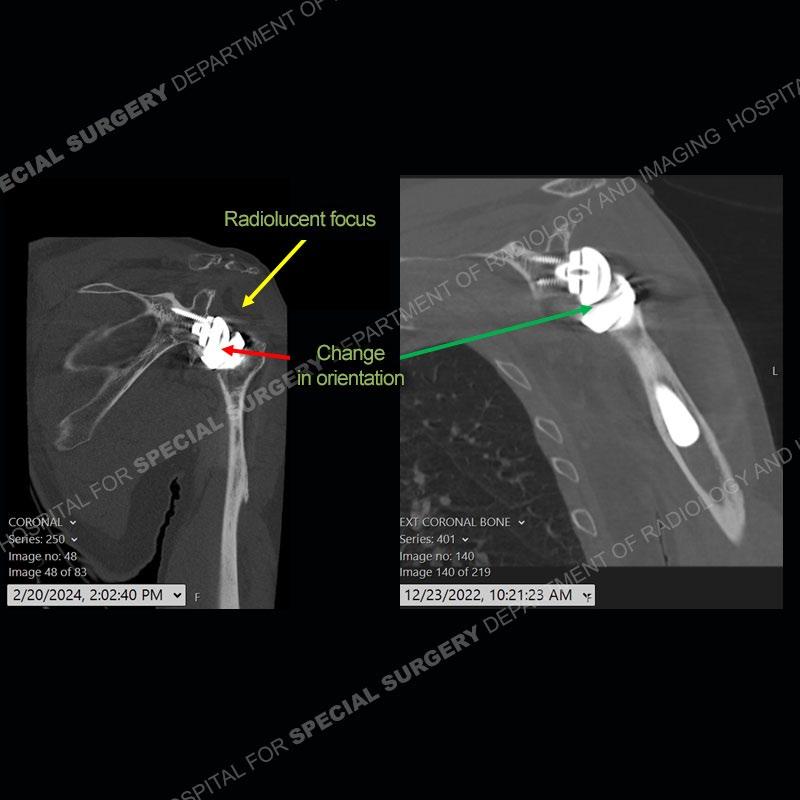
What’s the Diagnosis – Case 191 17
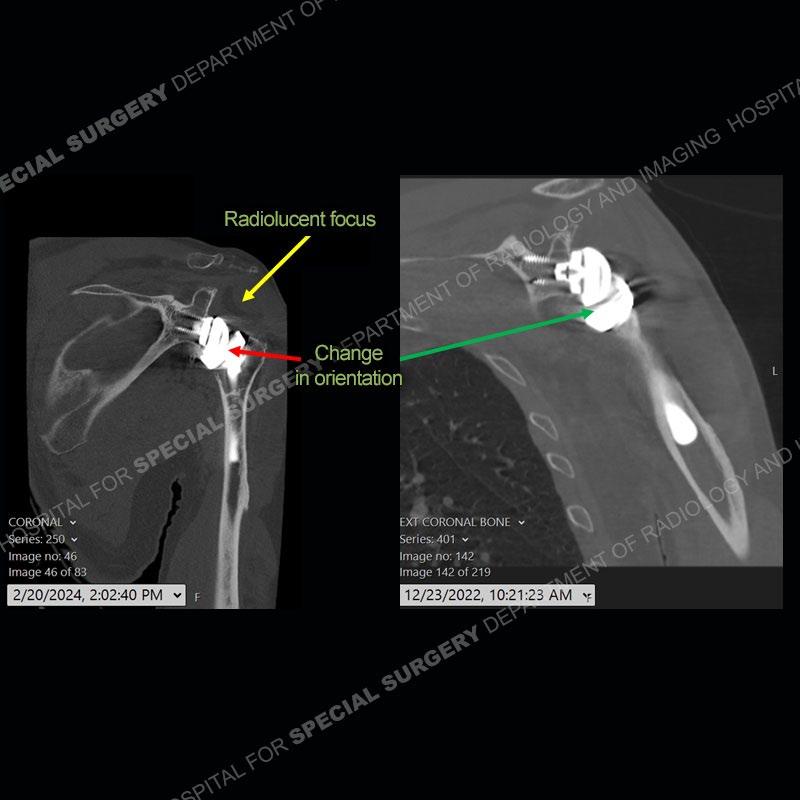
What’s the Diagnosis – Case 191 18
Diagnosis: Polyethylene Liner Dissociation
Total shoulder arthroplasty with a reverse type prosthesis is known to have certain complications such as scapular notching and acromial/scapular spine stress fractures. One of the other unique, but more infrequent complications is dissociation of the polyethylene liner from the humeral tray. Patients will present as in this case with instability and at times frank dislocation. The recognition of this process is important as it is a contraindication to attempt a closed reduction. The closed reduction will typically fail and may damage the components.
If comparison radiographs are present, subtle changes can be made more apparent. Instead of a space between the glenosphere and the humeral tray, there is a direct contact, and there may be an overall change in the alignment at the articulation. The displaced, radiolucent polyethylene liner depending on location can be seen on the radiographs, as in this case. At times, the liner may overlie other structures making identification very difficult on radiographs, but it should almost always be able to be identified on CT (as shown in this example as well). This patient is scheduled for revision procedure.

What’s the Diagnosis – Case 191
19
References
Paynter JW, Griswold BG, DeFoor MT, Crosby LA, Parada SA. Polyethylene Liner Dissociation after Reverse Shoulder Arthroplasty Dislocation: a Case Series. J Radiol Case Rep. 2020 Aug 31;14(8):14-23. doi: 10.3941/jrcr.v14i8.3836. PMID: 33088419; PMCID: PMC7535998.
Doran M, Boin MA, Anil U, Bustamante S, Kwon YW, Zuckerman JD, Virk MS. Polyethylene liner dissociation from humeral tray: impediment to closed reduction of dislocated reverse total shoulder replacement. JSES Int. 2022 Nov 9;7(2):247-251. doi: 10.1016/j.jseint.2022.10.010. PMID: 36911783; PMCID: PMC9998731.

What’s the Diagnosis – Case 191
20


















